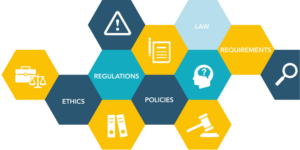
Without evidence, there can be no proof, and thus, no litigation. It’s age-old knowledge for litigation and as data volumes balloon and security risks abound it’s arguably more relevant than ever. That’s why the process of preservation is so foundational, and building a preservation plan that is defensible, is so important. Preserving evidence is a crucial precursor to ediscovery and all negotiations and court proceedings that come thereafter. Additionally, the duty to preserve evidence applies equally to both the plaintiff and defendant.
The good news? It doesn’t require perfection. Here to help you crack the code are 5 of our essential steps to putting together a defensible preservation plan.
1. Recognize the Trigger Event
While it can often be a little bit of a gray area – the moment of “credible probability” that something will be involved in litigation or something as concrete as commencing litigation – the trigger event is the jumping-off point for your preservation plan. Solving how you will identify and evaluate trigger events, as well as who will be responsible for making the decision, and how that person will be informed of the trigger event, is key to getting your preservation plan underway.
Pro tip for figuring out when a preservation duty has arrived: when an attorney is seeking “work product” protection the client should anticipate that litigation is possible.
2. Define the Scope of Preservation
There are a myriad of things to consider when determining the scope of preservation, everything from what information might be relevant to establishing the claims of anticipated litigation to what information may be useful to defend against those claims. It’s important to establish who will be engaged in the initial scoping process – from IT to HR – so you know who will be equipped to identify where potentially relevant information may be stored.
Pro tip for scoping preservation: You should always anticipate that new information may arise and alter the duty for litigation.
3. Take Action to Preserve
The tried and true legal hold. These must be timely, come with clear instructions on the actions that need to be taken, and include mechanisms to ensure that the notice was received and that the receiver will comply. Most importantly, the “notification process” should include steps to verify that the person receiving the hold clearly understands what is expected of them. Simply sending each custodian an email and hoping that they “get the point” could raise problems when it comes to defensibility down the line.
Pro tip for taking action: Anticipate or be ready for points of failure in the notification process, areas where important information might be at greatest risk of spoliation.
4. Monitor the Hold
Unfortunately, legal holds don’t just end the moment you hit “send” on the email. A good system for monitoring legal holds will usually involve an affirmative action upon receiving the hold, sending past-due notices, as well as issuing periodic reminders throughout the process. Fortunately, good legal hold software comes pre-baked with these steps to help you streamline the process and save time.
Pro tip for monitoring holds: Make questionnaires simple and to the point and you’ll encourage participation and hopefully incentivize a prompt response.
Your organization should be periodically reviewing, updating, and optimizing your preservation plan as litigation arises, new players come to the table, and new data sources emerge.
5. Release the Hold
One common, but often costly, trend among organizations is to hold on to information indefinitely out of fear of spoliation. To avoid this expense, an effective preservation plan should include a thorough process for releasing holds, resuming normal operations, as well as include data destruction when the time is right.
Pro tip for releasing the hold: Your organization should always reach out to any third parties maintaining data and request it to be destroyed after the hold is released.
What’s next?
Developing a solid preservation plan is not a one-time process. Your organization should be periodically reviewing, updating, and optimizing your preservation plan as litigation arises, new players come to the table, and new data sources emerge. No one wants the requirement for preservation to arise for anticipated litigation and to feel caught off guard, having a plan in place beforehand is a key component to successfully preserving any and all sensitive information that might be needed for litigation.
This comes from building a culture-wide perspective within your organization. By investing in a preservation plan beforehand, having a system in place, your organization will drastically limit risks, cut costs, and be better equipped to deal with litigation should it arise.




